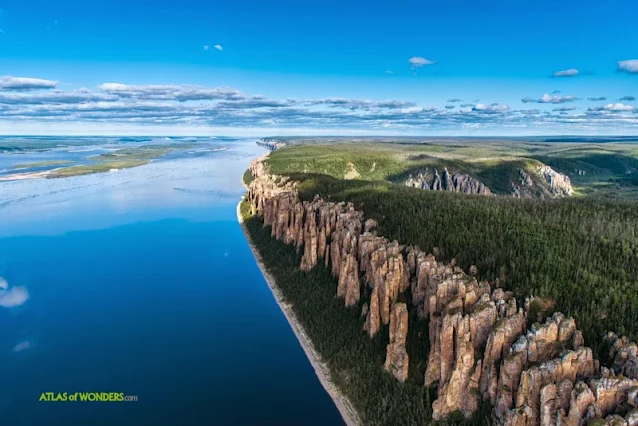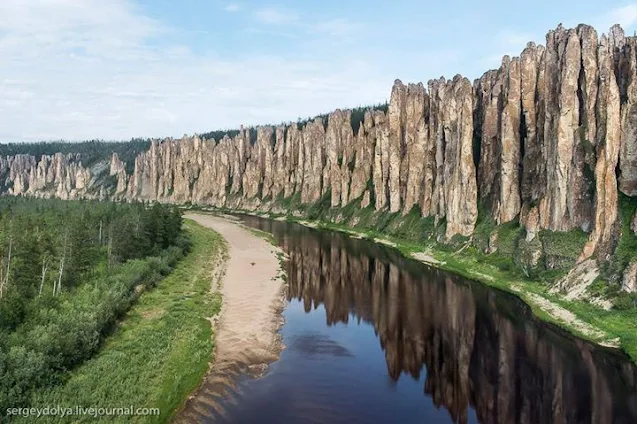The Lena Pillars - Yakutia
Lena's Pillars, also called Lena’s Stone Forest, is a natural rock formation about 60 km upriver from Yakutsk, in Russia. The amazing stone structures towers over 150–300 meters, (492–984 feet) in height and extends along the river for about 80km.
The Lena Pillars were formed during the Cambrian period, when the region was submerged under a shallow sea. Over time, layers of sediment accumulated, eventually hardening into limestone. As the Earth's crust underwent uplift, the Lena River carved its path through the landscape, exposing the underlying limestone formations. The relentless forces of erosion, including wind, water, and temperature fluctuations, gradually sculpted the limestone into the towering pillars we see today.
The park's unique geology has also preserved a rich fossil record, providing invaluable insights into the region's ancient past. Remains of extinct marine creatures, such as trilobites and brachiopods, have been unearthed from the limestone beds, offering a glimpse into the vibrant ecosystems that once thrived in this area.
The region’s extreme climate and the humidity from the river create extreme temperature swings, from +40 °C in the summer to -60 °C in winter. This causes a cryogenic process, consisting of a freeze-thaw action that shatters the rock, widening the gullies between them. These isolated, towering pillars can reach over 100 meters in height.
Lena’s Pillars have fascinated travellers since the 17th century. But getting there is not an easy task. Your trip will start in Moscow city from where you will have to take a four day journey to the Siberian area of Yakutsk. First, you have to take a flight to Yakutsk, so long that if you flew opposite direction you could easily come to New York.
Although Lena Pillars Nature Park is famous for its rocky formations, it is also home to numerous unique fossils of primitive fauna, such as mammoth, bison, reindeer, and wooly rhinoceros. Ancient organisms like mollusks, shells, sponges, and trilobites, dating back to the Cambrian Explosion were also found beautifully preserved.
This unique ecological and tourism location was submitted as a World Heritage site in 2006.
In
addition to its geological significance, Lena's Stone Forest holds
cultural and spiritual importance for the Yakut people, the indigenous
inhabitants of the region. The Yakut have long revered the pillars as
sacred sites, believing them to be imbued with spiritual power. The park
is home to numerous traditional Yakut burial grounds and remnants of
ancient settlements.
Visiting Lena's Stone Forest
Visiting Lena's Stone Forest is an adventure that requires careful planning and preparation. The best time to visit is during the summer months, when the weather is milder and the roads are more accessible. However, even in the summer, temperatures can drop below freezing at night, so it is important to pack warm clothing.
 |
| Lena Pillars Stone Forest in Winter |





.jpg)
.jpeg)








